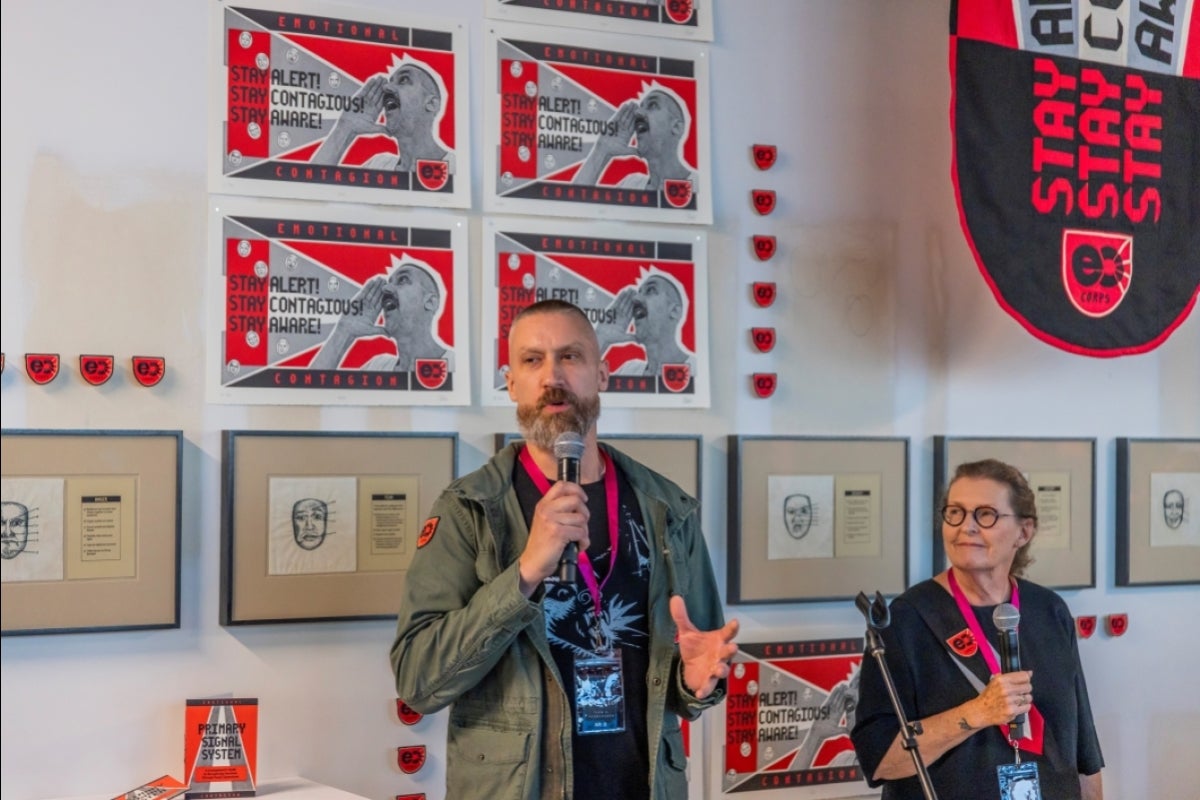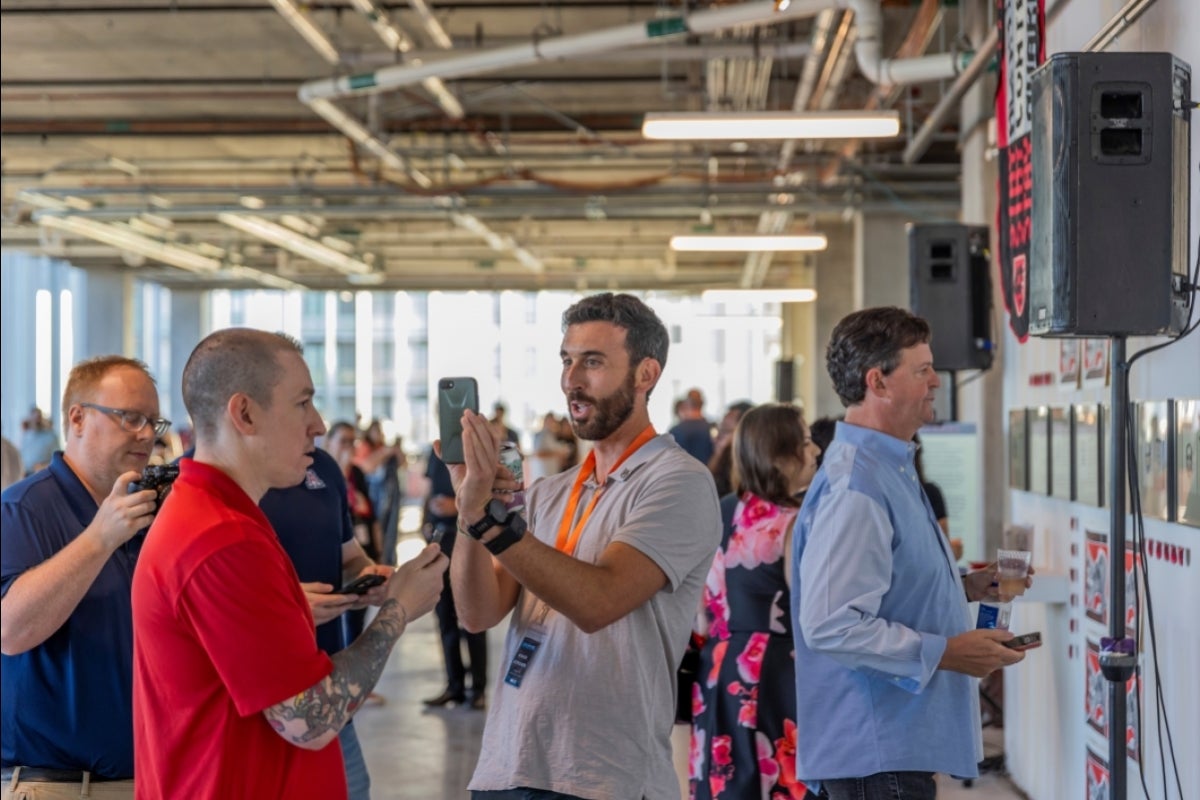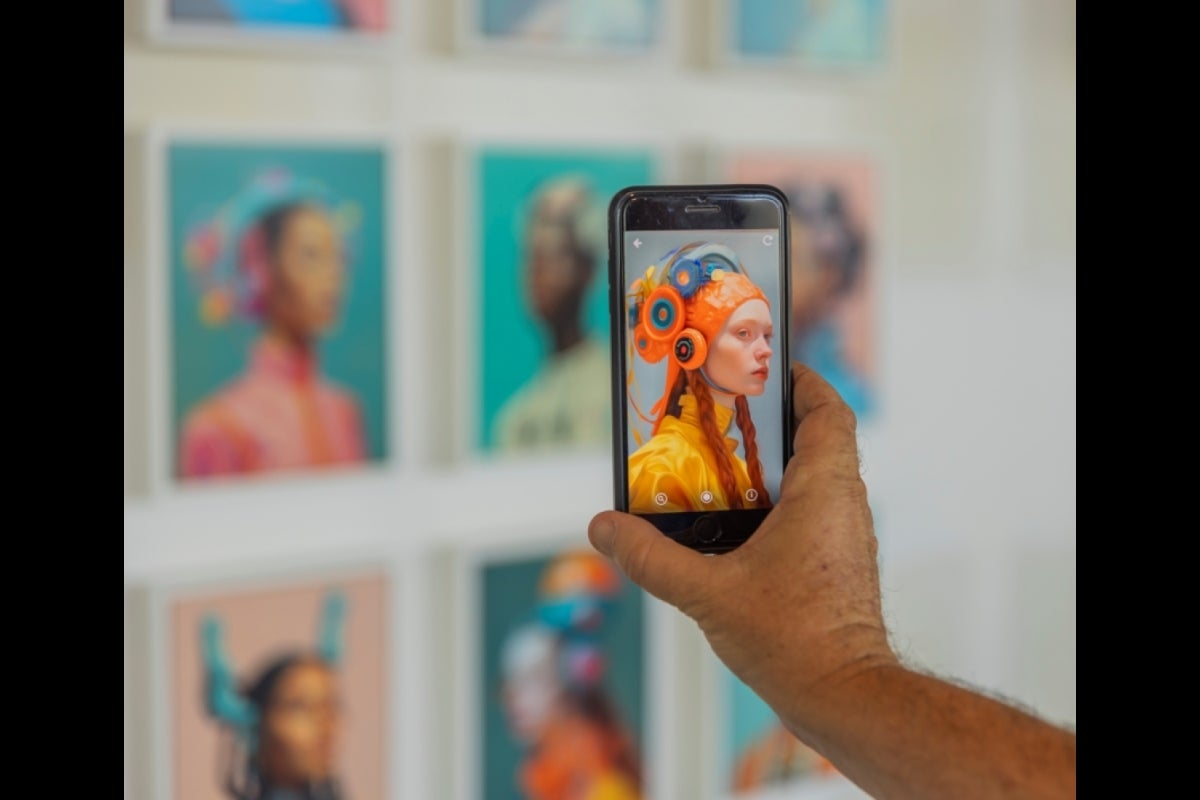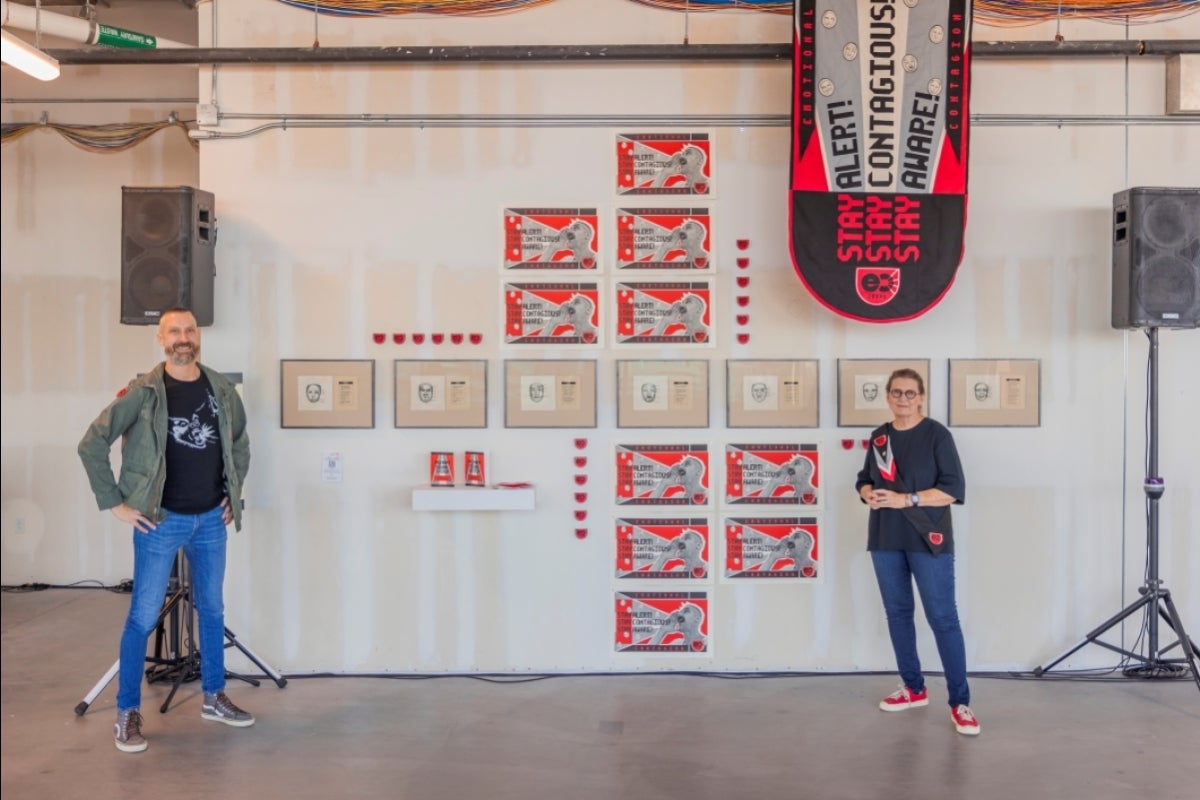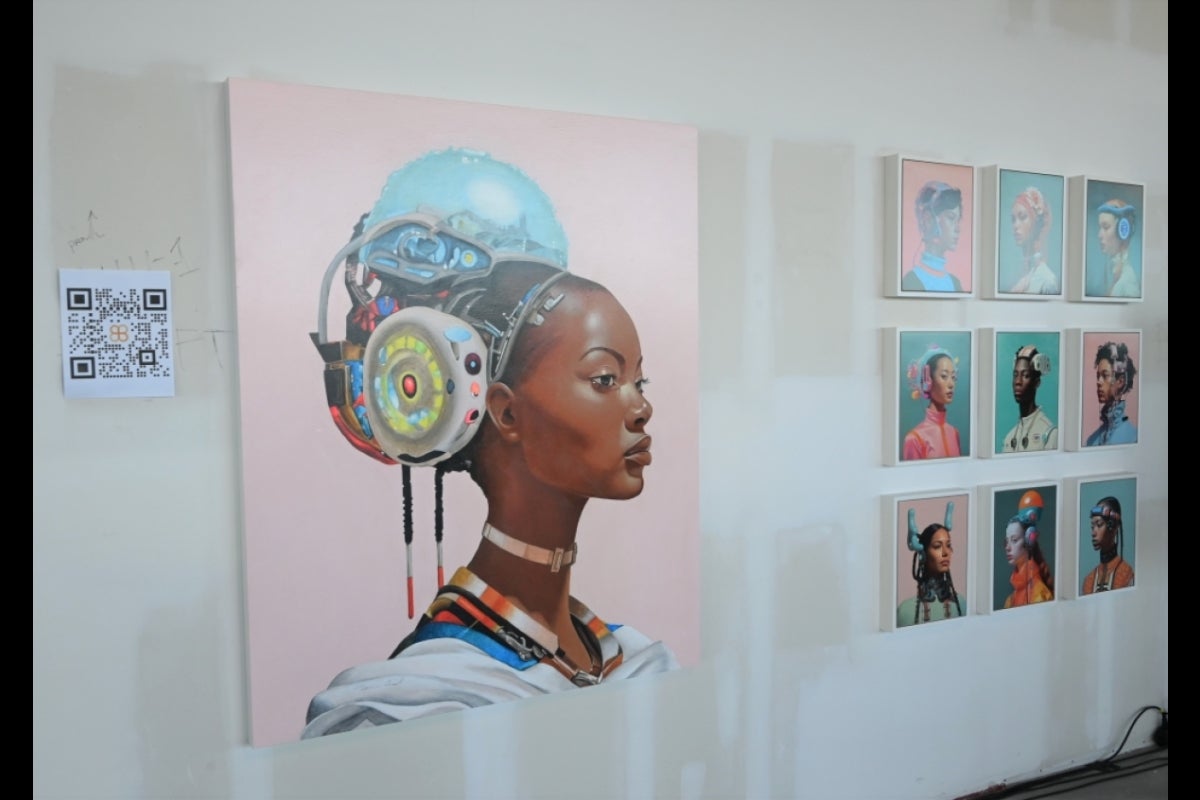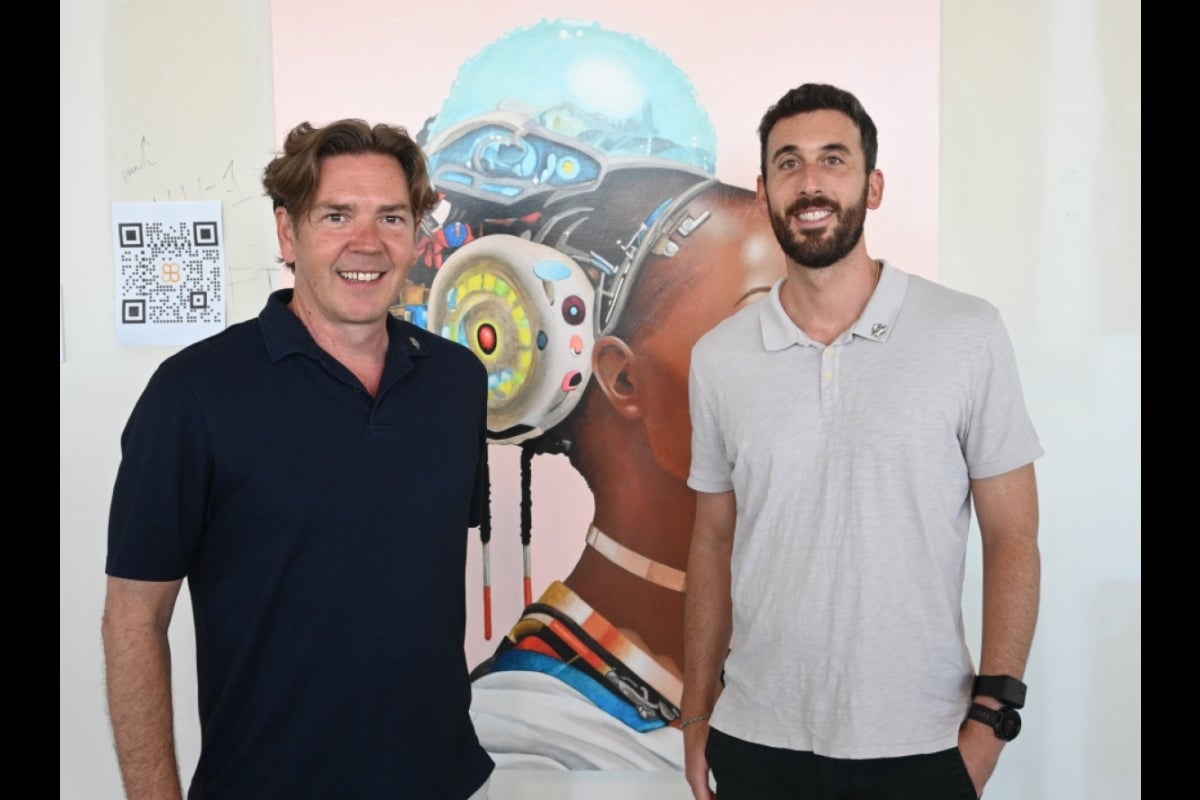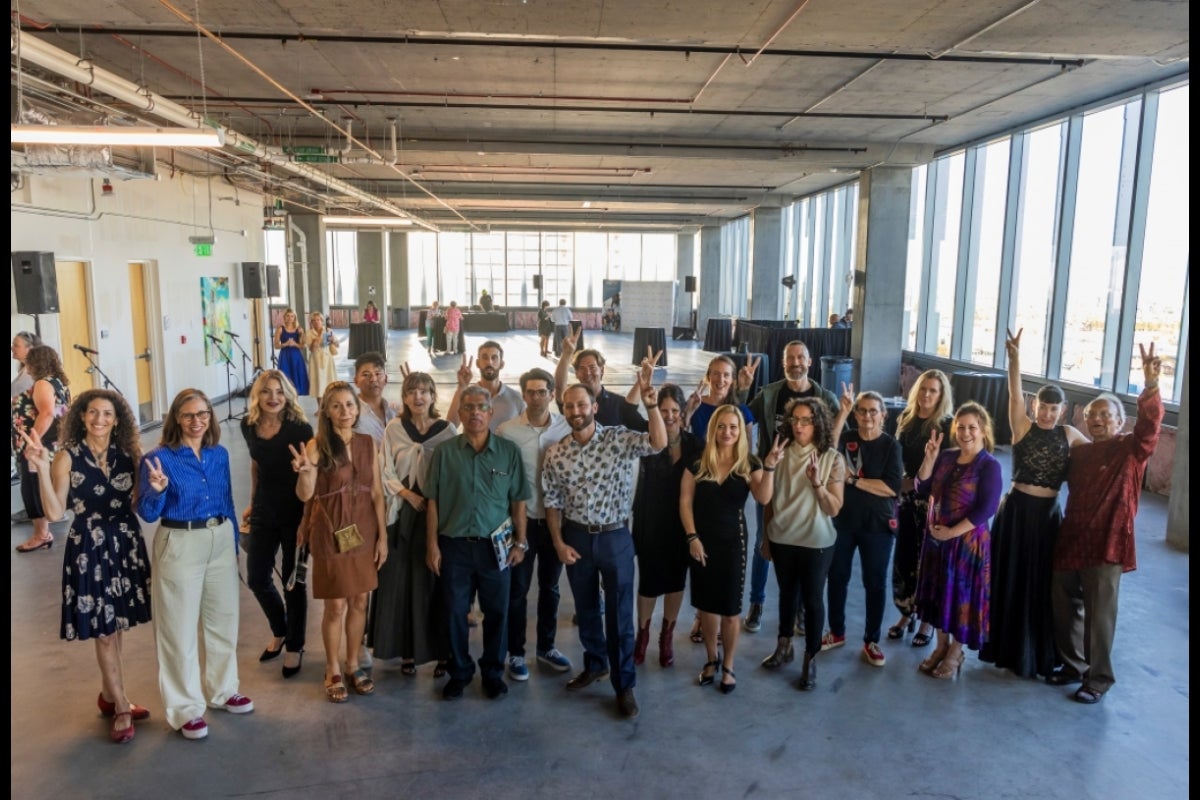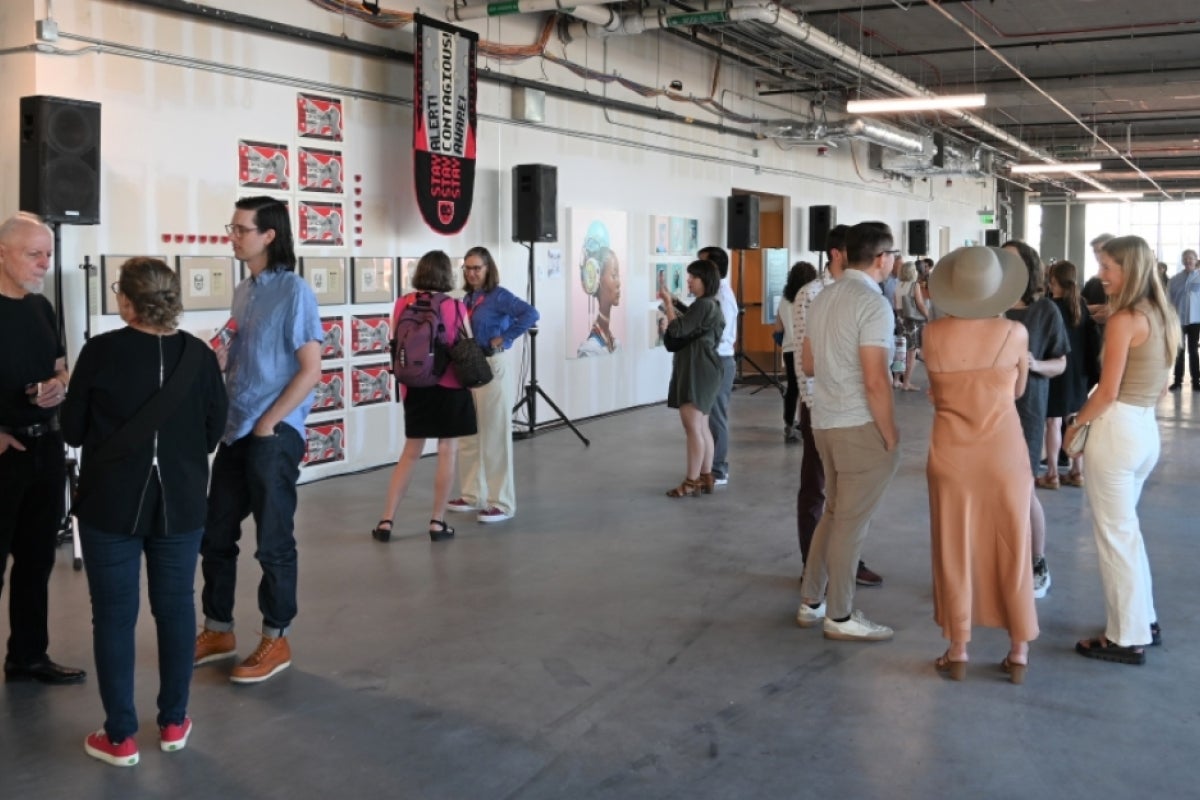ASU health science researchers team up with artists to imagine future of health care

College of Health Solutions Assistant Professor Chad Stecher (right) teamed up with artist James Angel to take part in "Artist + Researcher 2023," an exhibition put on by the Phoenix Bioscience Core Arts Committee. The exhibition paired health science researchers with artists to provide different interpretations of their research. Photo courtesy ASU College of Health Solutions
The striking collection of images look as if they could be characters from the latest sci-fi movie featuring advanced beings embarking on some futuristic adventure.
But what they actually portray is an interpretation of how wearable devices could play a role in health care in coming years.
The images are part of a collection called “Future Health Outcomes: The Rise of Experimental Behavior Health Economics,” which is part of the larger exhibition "Artist + Researcher 2023." Now in its second year, "Artist + Researcher" is an initiative of the Phoenix Bioscience Core’s Arts Committee that pairs artists with health sciences researchers from Arizona State University, Univeristy of Arizona, Northern Arizona University, the Translational Genomics Research Institute and the PBC startup ElectraTect to create unique interpretations of the researchers' work.
The exhibition opens to the public at 1 p.m., Saturday, Aug. 19, at the Bentley Gallery, located at 250 E. McKinley St. in downtown Phoenix. It will be on display through Aug. 26.
“Future Health Outcomes” is a collaboration between College of Health Solutions Assistant Professor Chad Stecher and artist James Angel.
Stecher is one of two ASU researchers participating in this year’s exhibition. The other is Barret Michalec, director of the Center for Advancing Interprofessional Practice, Education and Research (CAIPER). Michalec teamed up with textile artist Ann Morton (an ASU School of Art alumnus) to create an exhibit titled “EC Corps," which chronicles a fictitious resistance group called the Emotional Contagion Corps.
Inspired by Stecher’s work involving the use of wearable devices, Angel used artificial intelligence tools to help generate images that represent his interpretation of it. The exhibition employs augmented reality to show hundreds of different iterations of the images selected for the show, as well as some that didn’t quite make the cut.
“I think the pairing was great because he uses a lot of AI tools to generate and ideate,” Stecher said. “For my research, I use AI tools to analyze health wearables data and to design behavioral supports.
“We were immediately speaking the same language. We quickly worked through a lot of ideas. We must have looked at thousands of different images, and we picked our favorites and went from there.”
Angel was interested in taking part in the project as soon as he heard about it. He said his being paired with Stecher was a bonus.
“I love art and science,” Angel said. “And I couldn’t have been paired with a better partner. I would have been happy to work with any of these researchers, but he had me at experimental.
“It’s really exciting, important research. The use cases are so vast. That’s how we arrived at our global picture of the future aspect of it.”
“EC Corps” is Morton’s interpretation of Michalec’s work involving what he calls "emotional contagion," which he describes as humans' innate ability to feel empathy, to “get inside” of another’s emotional state.
The EC Corps is a fictitious group created by Morton that puts Michalec’s research into practice, "reigniting humankind’s emotional resonance and interpersonal connectivity" to counteract a high-tech world of cellphones and emojis in which humans are losing their ability and willingness to connect.
According to the artist statement, the exhibition features objects that the EC Corps would use to get that message across and imagines a clandestine meeting place where the group could meet.
Combining the disciplines of art and science has helped Stecher think about his research in different ways. He said he would be open to the idea of working with Angel on other projects.
“I didn’t know what to expect, but I really feel like I benefited from seeing my research through James’ eyes,” Stecher said. “We’ve had many coffee conversations over the past nine months, and hearing his reactions and seeing what he interpreted from what I was working on has been really interesting. It’s definitely motivated some new projects and thoughts.”
Those future collaborations might not feature images so futuristic as the ones included in “Future Health Outcomes.”
“We talked about working together on future content for some of the interventions I’m going to work on,” Stecher said. “These images really help. (The images in the current exhibition) are a bit futuristic, but we’ve also worked on some images related to medication adherence — that’s a project I’m working on right now. Trying to integrate some of his images into those future studies is something we’re going to actively work on together.”
More Science and technology

ASU-led space telescope is ready to fly
The Star Planet Activity Research CubeSat, or SPARCS, a small space telescope that will monitor the flares and sunspot activity…

ASU at the heart of the state's revitalized microelectronics industry
A stronger local economy, more reliable technology, and a future where our computers and devices do the impossible: that’s the…

Breakthrough copper alloy achieves unprecedented high-temperature performance
A team of researchers from Arizona State University, the U.S. Army Research Laboratory, Lehigh University and Louisiana State…


